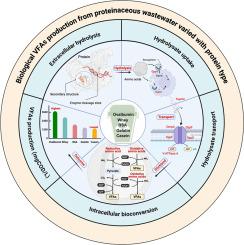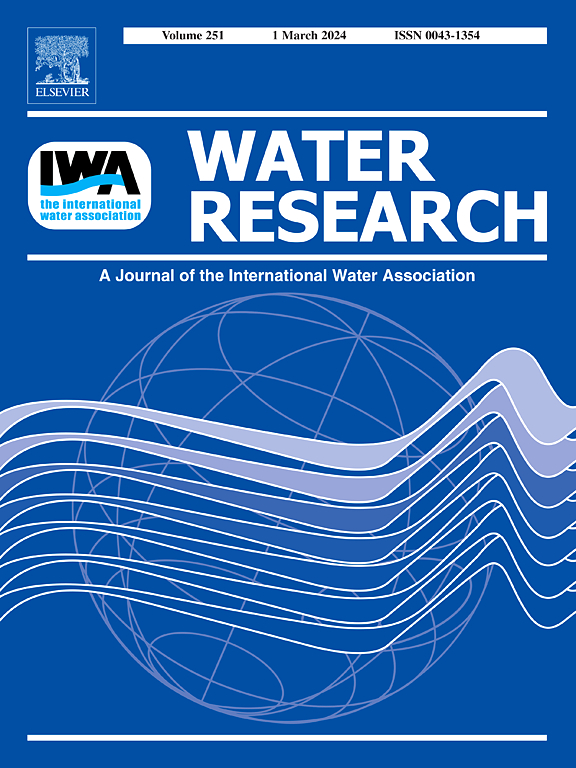Biological VFAs production from proteinaceous wastewater varied with protein type: The role of protein exposed enzyme cleavage sites and hydrolysates biotransformation capacity
IF 11.4
1区 环境科学与生态学
Q1 ENGINEERING, ENVIRONMENTAL
引用次数: 0
Abstract
Proteinaceous wastewater contains various proteins, which can be valorized to biobased volatile fatty acids (VFAs), important substrates for the synthesis of biodegradable plastics, biodiesel, bioelectricity, etc., but the influence of protein type on VFAs has never been documented. It was found that among the five proteinaceous wastewater proteins investigated, ovalbumin and casein produced the most and the least VFAs, respectively. The mechanism investigation shows that proteins with higher VFAs production had higher functional microorganism abundance and key enzyme activity in the reaction system due to their more enzyme cleavage sites and looser secondary structure, which made it easier for more hydrolase to bind, causing more protein hydrolysis. Also, metaproteomics and amino acid composition analyses revealed that the hydrolysates of proteins with higher VFAs had more isoleucine and proline, which were needed for the synthesis of recognizing and binding proteins (oligopeptide permease subunit A (OppA) and dipeptide permease (Dpp)) of acidogens and beneficial for transporters (Dpp subunit F/Opp subunit F), more hydrolysates (amino acids) were therefore transported into the cell. Further investigation indicates that more electron acceptor and electron donor paired amino acids were in the hydrolysates, facilitating the Stickland reaction and promoting intracellular amino acids bio-transformation to VFAs.


求助全文
约1分钟内获得全文
求助全文
来源期刊

Water Research
环境科学-工程:环境
CiteScore
20.80
自引率
9.40%
发文量
1307
审稿时长
38 days
期刊介绍:
Water Research, along with its open access companion journal Water Research X, serves as a platform for publishing original research papers covering various aspects of the science and technology related to the anthropogenic water cycle, water quality, and its management worldwide. The audience targeted by the journal comprises biologists, chemical engineers, chemists, civil engineers, environmental engineers, limnologists, and microbiologists. The scope of the journal include:
•Treatment processes for water and wastewaters (municipal, agricultural, industrial, and on-site treatment), including resource recovery and residuals management;
•Urban hydrology including sewer systems, stormwater management, and green infrastructure;
•Drinking water treatment and distribution;
•Potable and non-potable water reuse;
•Sanitation, public health, and risk assessment;
•Anaerobic digestion, solid and hazardous waste management, including source characterization and the effects and control of leachates and gaseous emissions;
•Contaminants (chemical, microbial, anthropogenic particles such as nanoparticles or microplastics) and related water quality sensing, monitoring, fate, and assessment;
•Anthropogenic impacts on inland, tidal, coastal and urban waters, focusing on surface and ground waters, and point and non-point sources of pollution;
•Environmental restoration, linked to surface water, groundwater and groundwater remediation;
•Analysis of the interfaces between sediments and water, and between water and atmosphere, focusing specifically on anthropogenic impacts;
•Mathematical modelling, systems analysis, machine learning, and beneficial use of big data related to the anthropogenic water cycle;
•Socio-economic, policy, and regulations studies.
 求助内容:
求助内容: 应助结果提醒方式:
应助结果提醒方式:


